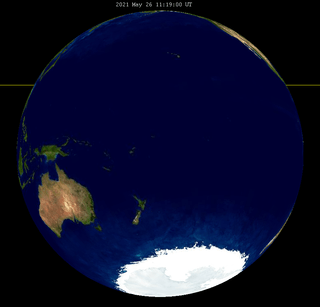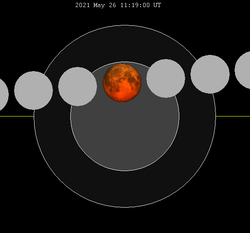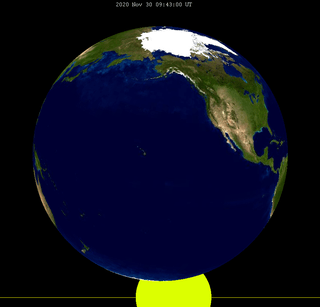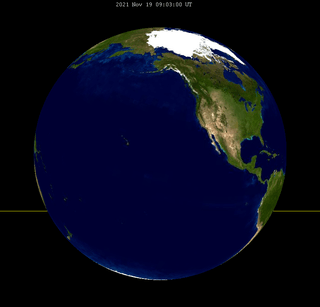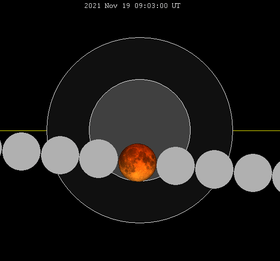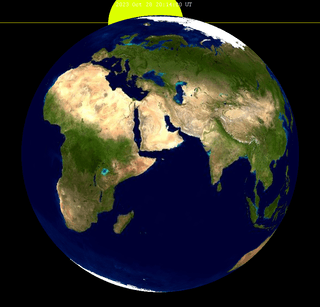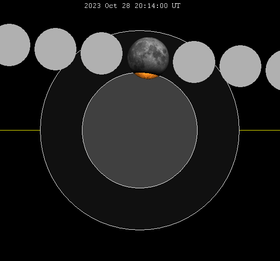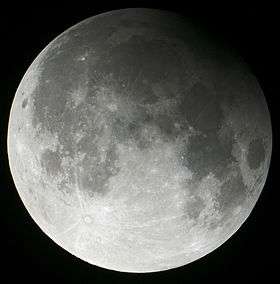May 2022 lunar eclipse
| Total lunar eclipse May 16, 2022 | |
|---|---|
Ecliptic north up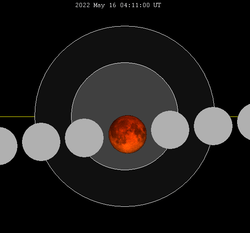 The moon will pass through the center of the Earth's shadow. | |
| Saros (and member) | 131 (34 of 72) |
| Gamma | -0.2532 |
| Duration (hr:mn:sc) | |
| Totality | 1:24:53 |
| Partial | 3:27:14 |
| Penumbral | 5:18:40 |
| Contacts (UTC) | |
| P1 | 1:32:07 |
| U1 | 2:27:53 |
| U2 | 3:29:03 |
| Greatest | 4:11:29 |
| U3 | 4:53:56 |
| U4 | 5:55:07 |
| P4 | 6:50:48 |
A total lunar eclipse will take place on May 16, 2022, the first of two total lunar eclipses in 2022, the second being on November 8.
Visibility
It will be completely visible over most of North and South America, seen rising over Northwest North America, and the Pacific ocean, and setting over Africa, and Europe.
 |
Related eclipses
Lunar year series
| Lunar eclipse series sets from 2020-2023 | |||||||||||||||||||||||||||||||||||||||||||
|---|---|---|---|---|---|---|---|---|---|---|---|---|---|---|---|---|---|---|---|---|---|---|---|---|---|---|---|---|---|---|---|---|---|---|---|---|---|---|---|---|---|---|---|
|
| ||||||||||||||||||||||||||||||||||||||||||
Saros series
Lunar Saros series 131, has 72 lunar eclipses.
This eclipse series began in AD 1427 with a partial eclipse at the southern edge of the Earth's shadow when the Moon was close to its descending node. Each successive Saros cycle, the Moon's orbital path is shifted northward with respect to the Earth's shadow, with the first total eclipse occurring in 1950. For the following 252 years, total eclipses occur, with the central eclipse being predicted to occur in 2078. The first partial eclipse after this is predicted to occur in the year 2220, and the final partial eclipse of the series will occur in 2707. The total lifetime of the lunar Saros series 131 is 1280 years.
Because of the ⅓ fraction of days in a Saros cycle, the visibility of each eclipse will differ for an observer at a given fixed locale. For the lunar Saros series 131, the first total eclipse of 1950 had its best visibility for viewers in Eastern Europe and the Middle East because mid-eclipse was at 20:44 UT. The following eclipse in the series occurred approximately 8 hours later in the day with mid-eclipse at 4:47 UT, and was best seen from North America and South America. The third total eclipse occurred approximately 8 hours later in the day than the second eclipse with mid-eclipse at 12:43 UT, and had its best visibility for viewers in the Western Pacific, East Asia, Australia and New Zealand. This cycle of visibility repeats from the initiation to termination of the series, with minor variations.
| Greatest | First | |||
|---|---|---|---|---|
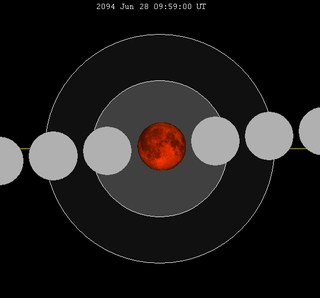 The greatest eclipse of the series will occur on 2094 Jun 28, lasting 102 minutes.[1] |
Penumbral | Partial | Total | Central |
| 1427 May 10 | 1553 July 25 | 1950 Apr 2 | 2022 May 16 | |
| Last | ||||
| Central | Total | Partial | Penumbral | |
| 2148 Jul 31 | 2202 Sep 3 | 2563 Apr 9 | 2707 Jul 7 | |
| 1914 Mar 12 | 1932 Mar 22 | 1950 Apr 2 | |||
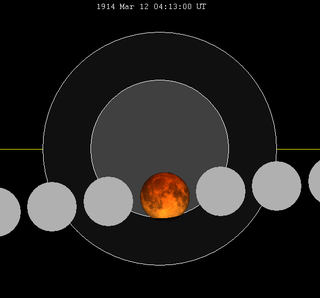 |
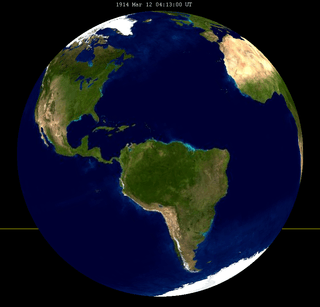 |
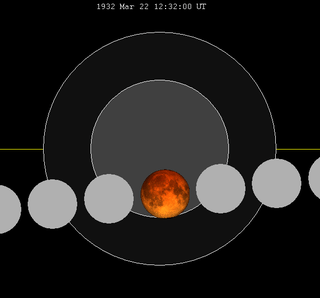 |
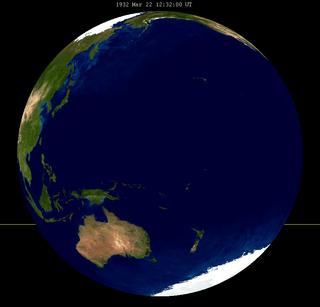 |
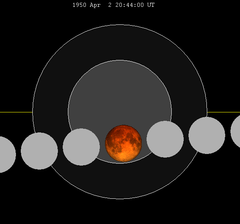 |
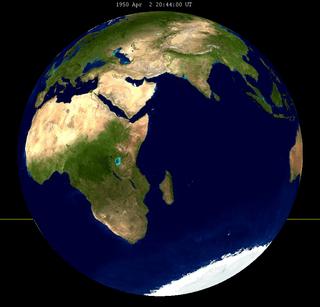 |
| 1968 Apr 13 | 1986 Apr 24 | 2004 May 4 | |||
 |
 |
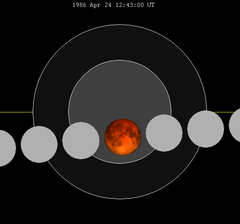 |
 |
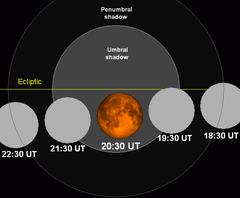 |
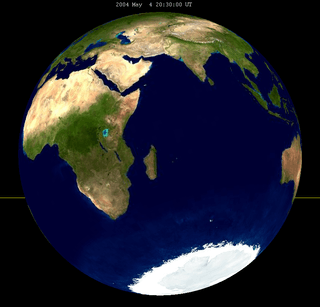 |
| 2022 May 16 | 2040 May 26 | 2058 Jun 6 | |||
 |
 |
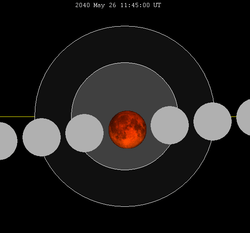 |
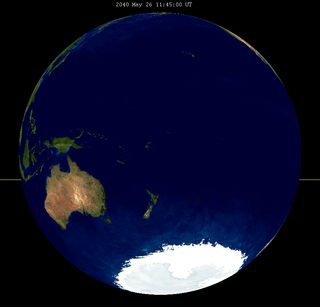 |
 |
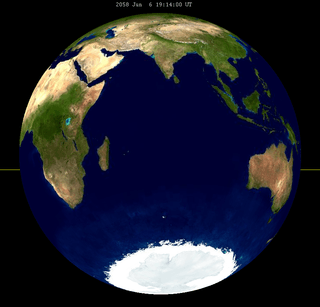 |
| 2076 Jun 17 | 2094 Jun 28 | ||||
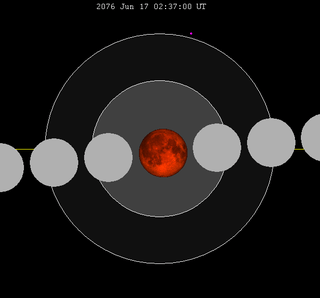 |
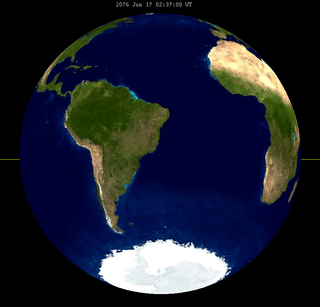 |
 |
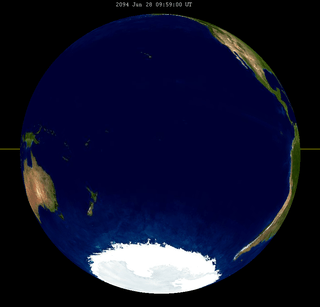 | ||
This is the first of the series that passes through the center of the Earth's shadow. The last occurrence was on May 2004 lunar eclipse. The next occurrence is May 2040 lunar eclipse.
Metonic series
This eclipse is the third of four Metonic cycle lunar eclipses on the same date, May 15–16, each separated by 19 years.
The moon's path through the Earth's shadow near its descending node progresses southward through each sequential eclipse. The second and third are total eclipses.
The Metonic cycle repeats nearly exactly every 19 years and represents a Saros cycle plus one lunar year. Because it occurs on the same calendar date, the earth's shadow will be in nearly the same location relative to the background stars.
|
|
 |
 |
See also
Notes
External links
- 2022 May 16 chart: Eclipse Predictions by Fred Espenak, NASA/GSFC


